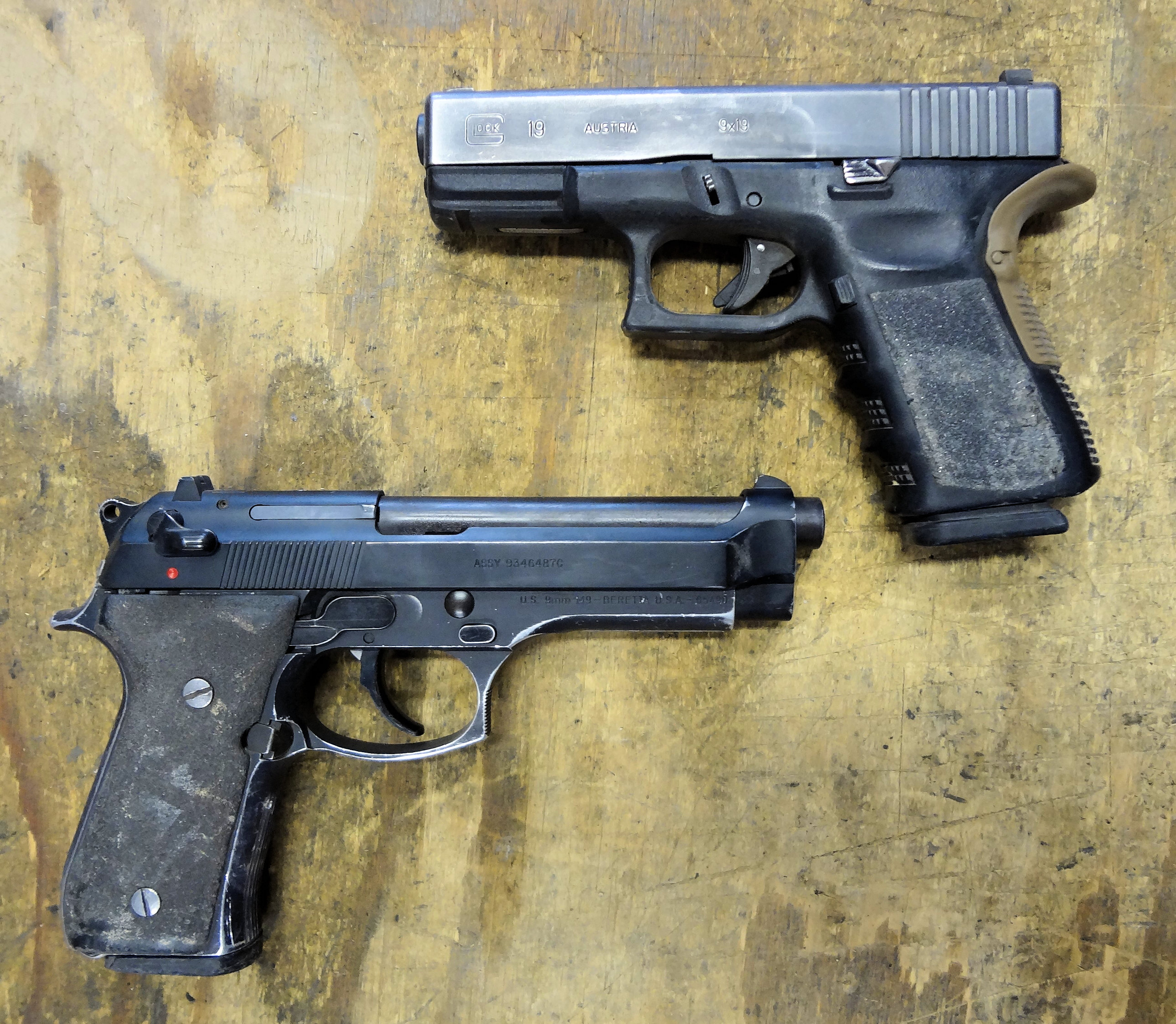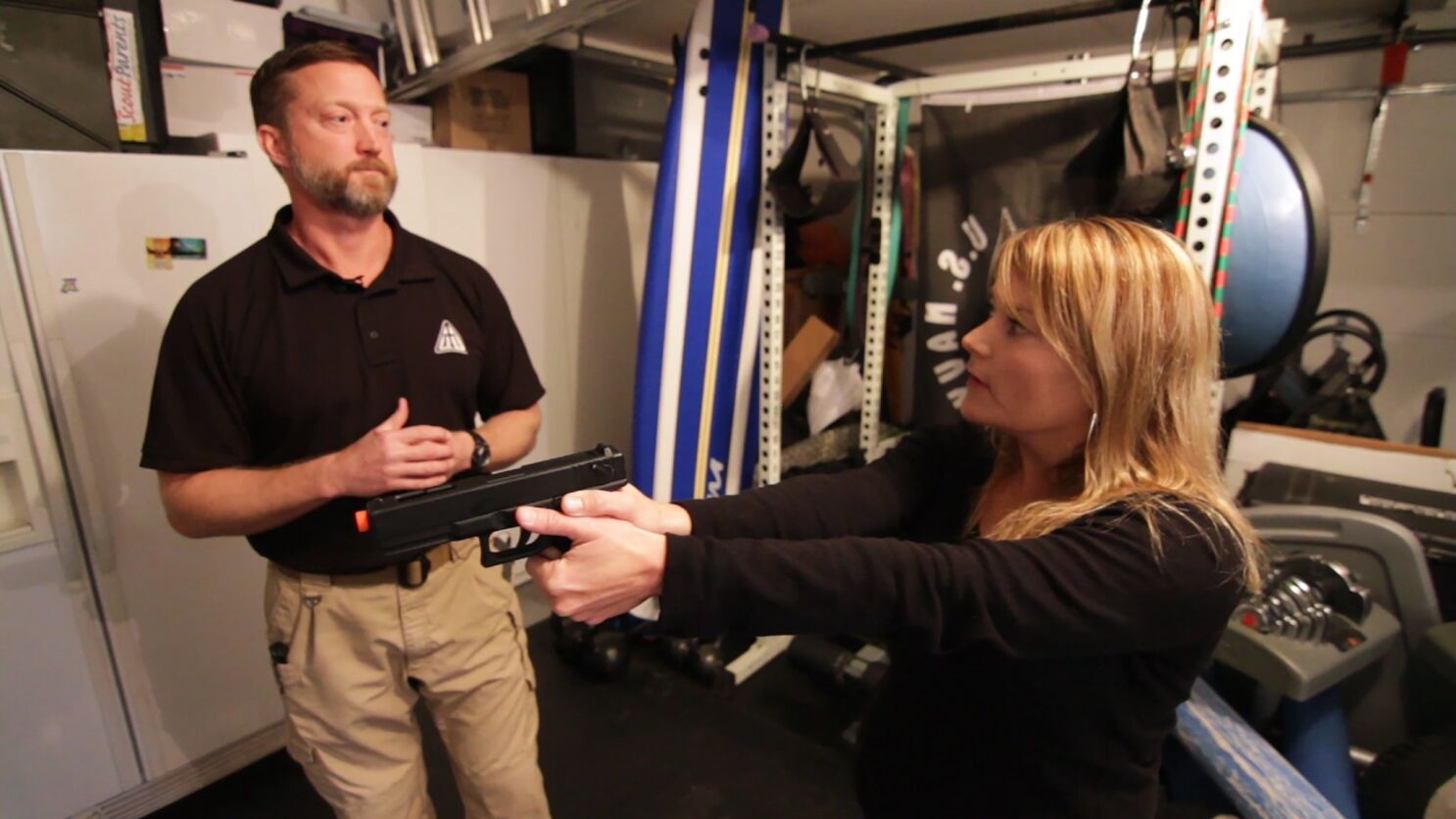Navy Seals Handgun - For three decades, USC Airborne (SEAL) Special Forces teams have relied on a pistol among other U.S. military personnel. While the Army, Marine Corps and the rest of the Navy carry the Beretta M9 pistol, the Navy Seals have an entirely different handgun: the Sig Sauer P226.
In the mid-1980s, the US military finally moved. A new pistol from the M1911A1 .45 caliber handgun, the Beretta 92FS. Known as the M9 in American service, the Beretta was considered a modern, safe, easy-to-shoot handgun with an ammunition capacity twice that of the .45. The M9 is adopted by all military weapons, including the elite US SEAL Team Six. marine Trained for counterterrorism missions, Team Six operators honed their close-quarters shooting skills, and in the 1980s Team Six had a small arms budget larger than the entire United States. navy
Navy Seals Handgun
All of this means that the cells assigned to Team Six put a lot of wear and tear on their pistols. In 1986, a SEAL was injured while demonstrating a Bretta for a VIP when the rear of the pistol's slide broke, causing the slide to fall into the sailor's face. Although the damage was relatively minor and only a few pistols showed signs of a cracked slide (a deficiency on the Bretta that was eventually fixed), the SEALs wanted a new pistol.
Glock 19 9mm: The Gun Of Choice For Us Navy Seals?
According to small arms historian Kevin Dockery, the SEALs tested the new Glock 17 pistol as a possible replacement. Glock performed well the so-called "salt fog test," which tests for metal corrosion, an important consideration given the tendency of cells to be completely submerged in salt water. Unsurprisingly, the Navy concluded that the Glock was "significantly less reliable than the Beretta M9 in other respects."
Instead, Sales opted for the P226 gun. Developed by German-Swiss firearms manufacturer Sig Sauer in competition to replace the M1911A1, the P226 came in second to the M9. The P226 is a variant of the company's popular P220, the official favorite of militaries around the world, from Switzerland (naturally) to Japan. The P226 was immediately put through extensive environmental tests that simulate the operating environment of SEAL units, including immersion in sand, salt water and mud. Perhaps wary of recruiting another pistol with slide-cracking problems, the SEALs put five test pistols through a thirty-thousand-round endurance test each.
Sig Sauer itself has quite a history. A Swiss industrial company that makes everything from railroads to firearms, the Schweizerische Industrie Gesellschaft (SIG) was founded in 1853 in Neuhausen am Rheinfall, Switzerland, and is the mastermind behind the SIG P210 handgun. In 1976, SIG's firearms division partnered with Sauer & Sohn. Sauer & Sohn was the oldest gun manufacturer in Germany at the time, founded in 1751, and traditionally emphasized sporting firearms.
The P226 was identified in SEAL service as the Mk. 25. The handgun is derived from the original Sig P10, a very successful weapon in its own right, but updated with modern features. Like the 210, the 226 used the Peter Browning locking system, which updated John Browning's 1911 locking system with improvements made by Swiss engineer Charles Peter, including the elimination of the barrel bushing and the use of a full-length guide rod. The P226's main competitor, the Glock 17, also uses the Peter Browning locking system, as do many contemporary pistols.
The History Of The Cia's Silent Pistol Of Choice
The SEALs placed an initial request for 800 P226s and the first pistol, officially designated the Mk. 25, was nominated in 1989. The Mk. 25 has a 4.4-inch barrel, half an inch shorter than the Beretta M9, and the handgun is chambered for a nine-millimeter parabolum. The frame is made of alloy steel, while the slide is made of stainless steel for extra strength, and the slide is finished in nitro for corrosion resistance. The gun weighs two ounces with a full magazine just shy of two pounds.
Mk. 25 can be fired as a single- or double-action pistol, and has a decocker to safely release the hammer without firing a round. Unlike the Beretta, there is no manual safety—all mechanical safeties are instead integrated into the fire control system to prevent accidental release. The pistol magazine holds fifteen rounds in a double-stack configuration. While this increases the amount of firepower the sig can put out, it also widens the pistol's grip, making it less ergonomic for people with smaller hands.
Mk. 25 has been with sales for the past three decades, including operations in Panama, Somalia, Haiti, the Balkans, Iraq, Afghanistan, Syria and other countries. In late 2015, the Navy Special Warfare Command decided to add the Glock 19, a compact nine-millimeter version of the Glock series of handguns, to the SEALs' handgun arsenal. While the Mk. 25s will continue, the SEALs will gradually replace them with newer Glocks. Sig Sauer spent a quarter century arming America's Marine commandos, and now the torch has been passed to the Glock.

Appreciated by Rep. Rob Whitman on Navy push for 150 drones, 'island-hopping' light amphibious warships and 'forward presence' to counter China
Classic Sig Shines In Terminal List: The Mk25 :: Guns.com
By Peter Hesse - Warrior Senior Nuclear Weapons Analyst, Senior Fellow - Warrior Maven, Atlantic Council, Hudson Institute, January 2, 2023 Here's what you need to remember: The Mk. 25 has been with sales for the past three decades, including operations in Panama, Somalia, Haiti, the Balkans, Iraq, Afghanistan, Syria and other countries.
For three decades, USC Airborne (SEAL) Special Forces teams have relied on a pistol among other U.S. military personnel. While the Army, Marine Corps and the rest of the Navy carry the Beretta M9 pistol, the Navy Seals have an entirely different handgun: the Sig Sauer P226.
In the mid-1980s, the US military finally moved. A new pistol from the M1911A1 .45 caliber handgun, the Beretta 92FS. Known as the M9 in American service, the Beretta was considered a modern, safe, easy-to-shoot handgun with an ammunition capacity twice that of the .45. The M9 is adopted by all military forces, including the elite US SEAL Team Six. marine Trained for counterterrorism missions, Team Six operators honed their close-quarters shooting skills, and in the 1980s Team Six had a small arms budget larger than the entire United States. navy
All of this means that the cells assigned to Team Six put a lot of wear and tear on their pistols. In 1986, a SEAL was injured while demonstrating a Bretta for a VIP when the rear of the pistol's slide broke, causing the slide to fall into the sailor's face. Although the damage was relatively minor and only a few pistols showed signs of a cracked slide (a deficiency on the Bretta that was eventually fixed), the SEALs wanted a new pistol.
Sig Sauer P226 Rx! I Am So Incredibly Happy To Have This Modern Handgun With A Romeo1 Reflex Sight. I Now Own An Official Sidearm Of The Navy Seals, Which Makes Me
According to small arms historian Kevin Dockery, the SEALs tested the new Glock 17 pistol as a possible replacement. Glock performed well the so-called "salt fog test," which tests for metal corrosion, an important consideration given the tendency of cells to be completely submerged in salt water. Unsurprisingly, the Navy concluded that the Glock was "significantly less reliable than the Beretta M9 in other respects."
Instead, Sales opted for the P226 gun. Developed by German-Swiss firearms manufacturer Sig Sauer in competition to replace the M1911A1, the P226 came in second to the M9. The P226 is a variant of the company's popular P220, the official favorite of militaries around the world, from Switzerland (naturally) to Japan. The P226 was immediately put through extensive environmental tests that simulate the operating environment of SEAL units, including immersion in sand, salt water and mud. Perhaps wary of recruiting another pistol with slide-cracking problems, the SEALs put five test pistols through a thirty-thousand-round endurance test each.
Sig Sauer itself has quite a history. A Swiss industrial company that makes everything from railroads to firearms, the Schweizerische Industrie Gesellschaft (SIG) was founded in 1853 in Neuhausen am Rheinfall, Switzerland, and is the mastermind behind the SIG P210 handgun. In 1976, SIG's firearms division partnered with Sauer & Sohn. Sauer & Sohn was the oldest gun manufacturer in Germany at the time, founded in 1751, and traditionally emphasized sporting firearms.

The P226 was identified in SEAL service as the Mk. 25. The handgun is derived from the original Sig P10, a very successful weapon in its own right, but updated with modern features. Like the 210, the 226 used the Peter Browning locking system, which updated John Browning's 1911 locking system with improvements made by Swiss engineer Charles Peter, including the elimination of the barrel bushing and the use of a full-length guide rod. The P226's main competitor, the Glock 17, also uses the Peter Browning locking system, as do many contemporary pistols.
Marine Corps Fields First New Service Pistol In 35 Years > United States Marine Corps Flagship > News Display
The SEALs placed an initial request for 800 P226s and the first pistol, officially designated the Mk. 25, was nominated in 1989. The Mk. 25 has a 4.4-inch barrel, half an inch shorter than the Beretta M9, and the handgun is chambered for a nine-millimeter parabolum. The frame is made of alloy steel, while the slide is made of stainless steel for extra strength, and the slide is finished in nitro for corrosion resistance. The gun weighs two ounces with a full magazine just shy of two pounds.
Mk. 25 can be fired as a single- or double-action pistol, and has a decocker to safely release the hammer without firing a round. Unlike the Beretta, there is no manual safety—all mechanical safeties are instead integrated into the fire control system to prevent accidental release. The pistol magazine holds fifteen rounds in a double-stack configuration. While this increases the amount of firepower that the sig can put out, it also widens the pistol's grip, making it less ergonomic for people with smaller hands.
Mk. 25 has been with sales for the past three decades, including operations in Panama, Somalia, Haiti, the Balkans, Iraq, Afghanistan, Syria and other countries. In late 2015, the Navy Special Warfare Command decided to add the Glock 19, a compact nine-millimeter version of the Glock series of handguns, to the SEALs' handgun arsenal. While the Mk. 25s will continue, sales will gradually replace them
Navy seals boot camp, navy seals tactical, navy seals information, navy and navy seals, the navy seals, navy seals sunglasses, us navy seals, navy seals salary, join navy seals, us navy seals hat, navy seals recruiting office, navy seals workout training

0 Comments